For some of us, especially those in the eastern U.S., spring can’t come soon enough. But for others, it’s been a dry and relatively warm winter. Still, no matter where we are, the spring itch is fully upon us — and I’m here to urge you to think twice about scratching. Why shouldn’t you clean up the garden just yet?
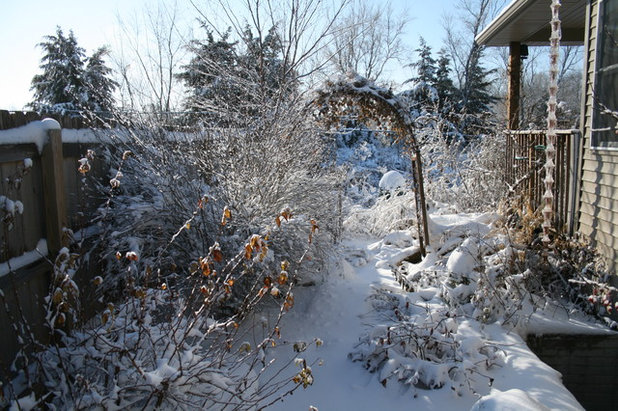
Benjamin Vogt / Monarch Gardens
1. Snow could return. If you’re in the northern half of the U.S., it very well might snow again — and snow a good deal. Leaving plants up will help them gather snow around themselves, which insulates the root zone. Snows are often followed by a day or two of bitter cold, and even the cold-tolerant plants will want a blanket if that happens.
In addition, many plants have hollow stems. When water gets down toward the bottom of a stem or stalk, it may freeze at the center of the plant and cause injury or death. There’s no reason to cut off the sealed cover of a stem at this point.
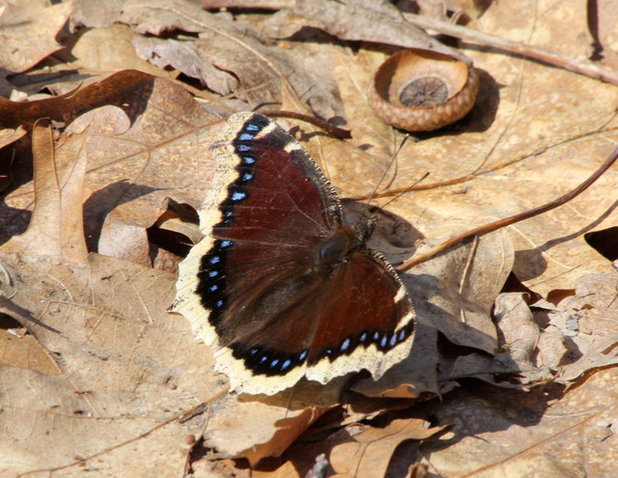 2. Stuff is sleeping out there.
2. Stuff is sleeping out there. Speaking of hollow stems, many insects, such as native bees, have spent the winter maturing in the comfy confines of stems; they were laid as eggs in the summer or fall, then they emerged and are now resting adults ready to come out when the heat returns in mid- to late spring. Exposing them to fluctuating weather conditions may do great harm.
And what else is sleeping? Butterflies and moths and spiders and other native bees may be in the soil or just below the leaf litter. Many species overwinter as adults and take shelter in the natural detritus of the garden — you don’t want to walk on them.
Photo by Dick Mansfield
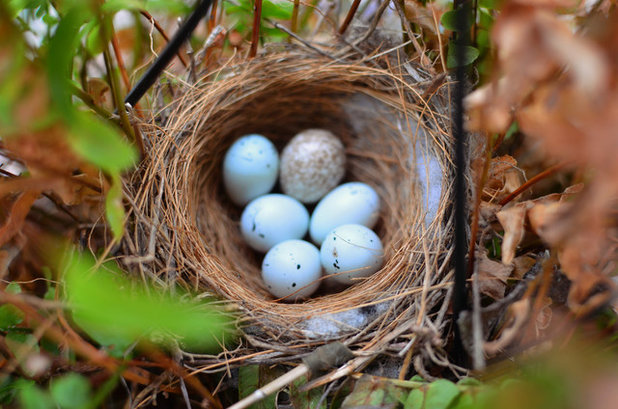
Amy Renea
3. You’ll help bird families. Hopefully you mulch your garden with whatever you cut down; I can’t tell you how many times I’ve seen birds coming to my garden to pick up little sticks or stems I’ve trimmed off to carry them to a nest they’re making. I even leave my ornamental grasses up well into May — since most are warm-season grasses, they don’t even begin to get going until June anyway, and those wispy blades are perfect nesting material.
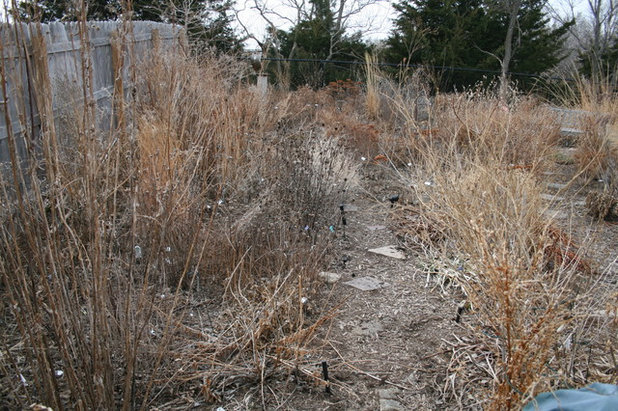
Benjamin Vogt / Monarch Gardens
4. You’ll preserve the soil structure. You never want to work soil when it’s wet, especially clay soil, and you surely don’t want to be stepping on it, which would just compact it further. Simply put, stay out of the beds until you absolutely have to get in there. Yes, you’ll see green stuff coming up, and you might even panic as it reaches 6 or 12 inches tall — but don’t panic, trust me. Nature doesn’t hurry, which works out well in woods and prairies, so take your cues from the natural gardens beyond the fence line and ignore your spring fever.
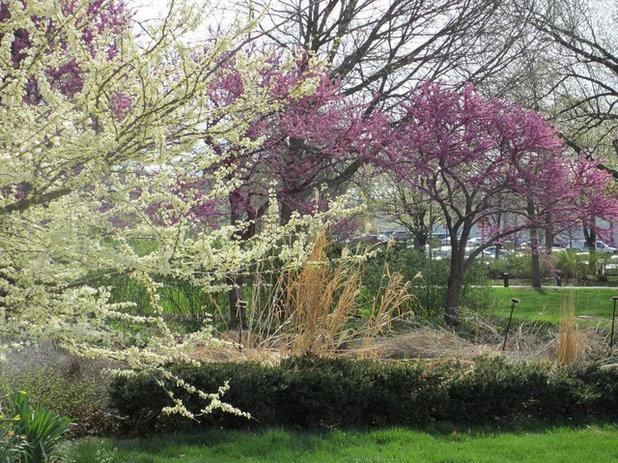
Benjamin Vogt / Monarch Gardens
My advice is to follow this calendar to benefit wildlife and the health of your garden beds (find your plant hardiness zone):
- Zone 7 or warmer: Wait until at least March 15
- Zone 6: Wait until at least April 1
- Zone 5: Wait until April 15 or later
- Zone 4: Wait until May 1 or later
- Zone 3 or colder: Wait until May 15 or later
You may have some diseased or damaged trees and shrubs you already trimmed in the late-winter dormant season, and there may be vegetable beds to prepare and seed. But for a perennial garden, have patience — take advantage of the calm before the storm to fine-tune your garden plans for the year so you’re ready to hit the ground running (pun intended).
Region by region: What to Do in Your Garden This Month





